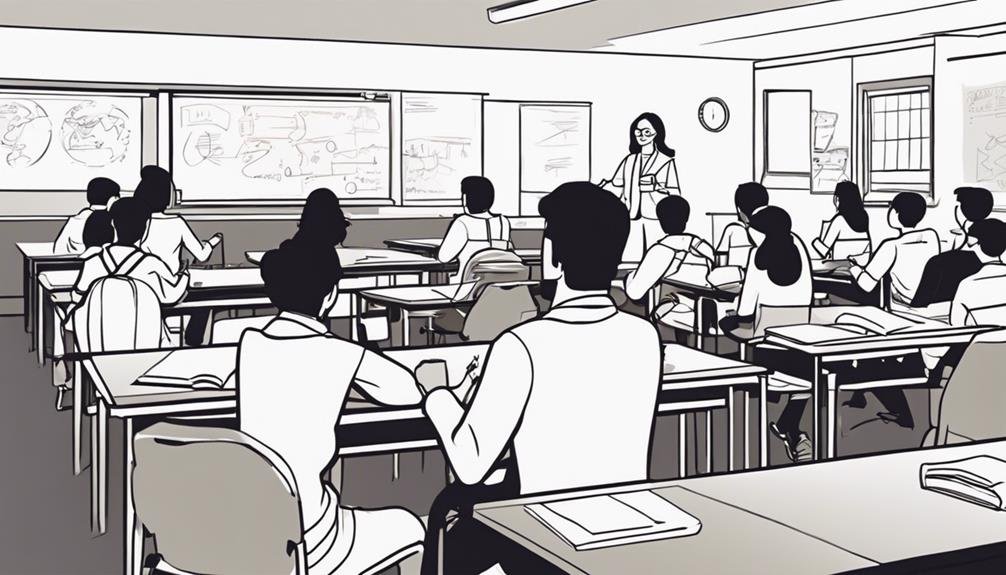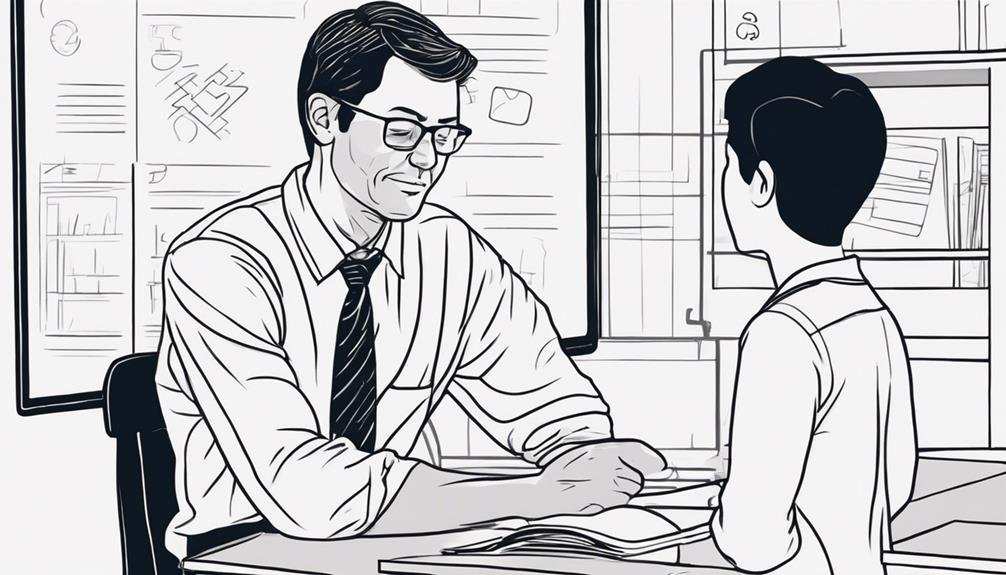To excel as a teacher, you must master essential skills like strong communication, active listening, collaboration, adaptability, and empathy. Effective communication guarantees clear delivery of information, while active listening helps you understand your students' needs and perspectives. Working collaboratively with peers enriches teaching practices and promotes innovations in education. Being adaptable allows you to adjust lessons to cater to diverse student requirements, creating dynamic learning environments. Empathy and patience foster inclusive classrooms and nurture student-teacher relationships. By honing these skills, you pave the way for engaging students, supporting varied learning styles, and fostering a positive educational experience.
Key Takeaways
- Strong communication skills for effective instruction and information delivery.
- Active listening ability to understand student needs and perspectives.
- Collaboration with peers to share best practices and enhance teaching methods.
- Adaptability to cater to diverse student needs and make quick adjustments.
- Engaging teaching methods like humor and interactive elements to foster student interest.
Communication and Listening Skills

Developing strong communication and listening skills is vital for aspiring teachers. Communication skills are necessary for effectively conveying information and instructions to students, while listening ability is essential for understanding student needs, concerns, and perspectives. By honing these skills, teachers can build strong student-teacher relationships and create a supportive learning environment. Effective communication and listening also enable educators to tailor their lessons to meet the diverse needs of students, fostering inclusive classrooms. Furthermore, having a collaboration mindset enhances communication and listening skills by promoting teamwork and shared learning experiences among educators. Embracing a collaborative approach not only benefits teachers in their professional development but also enriches the overall educational experience for students. Essentially, mastering communication and listening skills is fundamental for aspiring teachers to create a dynamic and engaging learning environment that caters to the individual needs of every student.
Collaboration in Education
To excel in the field of education, it is crucial for teachers to engage in effective teamwork with their peers. Collaboration in education involves working alongside colleagues to share best practices and enhance teaching methods. By collaborating with others in the field, educators can improve student learning outcomes and support professional development. Open-mindedness and flexibility are essential qualities for successful teamwork. Teachers can take on various roles, share resources, and create an innovative learning environment when working together as a team in education. Embracing collaboration allows educators to access a wealth of knowledge, experience, and creativity that can benefit both teachers and students. Through collaboration, teachers can learn from one another, adapt to new challenges, and collectively work towards creating a supportive and dynamic educational setting. Essentially, teamwork in education is a cornerstone for fostering growth, innovation, and success within the teaching profession.
Adaptability in Teaching

Adaptability in teaching is a fundamental skill that enables educators to effectively cater to the diverse needs of their students. Being flexible means adjusting lesson plans and teaching methods to accommodate different learning styles and abilities, responding to unexpected situations, and staying current with changing educational standards. This skill allows teachers to create dynamic learning environments that engage students and promote effective teaching practices. Here is a breakdown of how adaptability plays an essential role in teaching:
| Aspect of Adaptability | Description | Significance |
|---|---|---|
| Adjusting Lesson Plans | Tailoring plans to meet student needs | Ensures content is relevant and accessible |
| Responding to Situations | Making quick changes as needed | Enhances flexibility and problem-solving skills |
| Staying Current | Keeping up with educational trends | Fosters innovation and effectiveness |
Engaging Teaching Methods
Utilizing engaging teaching methods is a critical aspect of fostering student interest and participation in the learning process. By incorporating humor, creativity, and real-world relevance into your lessons, you can capture the attention of your students and make the educational experience more enjoyable and impactful. A strong classroom presence is essential for maintaining student engagement and creating an interactive learning environment where students feel motivated to participate actively.
Performing demonstrations, engaging in role-playing activities, and incorporating interactive elements into your teaching can enhance the effectiveness of your methods. It is important to tailor these engagement strategies to the specific grade level of your students to guarantee that the content is not only engaging but also appropriate and beneficial for their learning needs. By bringing real-world relevance to your lessons, you can help students see the practical applications of what they are learning, fostering deeper understanding and engagement in the classroom.
Empathy and Patience in Teaching

Incorporating empathy and patience into your teaching approach is essential for establishing a supportive and inclusive classroom environment. Empathy allows you to understand and connect with students on a personal level, creating a space where diverse student needs are met with understanding and care. By practicing patience, you can navigate challenges and behaviors calmly, fostering positive relationships and a sense of belonging among your students. Through empathy, you gain insight into students' perspectives and emotions, enabling you to provide effective support tailored to their individual requirements. Patience plays a pivotal role in managing various situations with composure, ensuring thoughtful responses that contribute to better learning outcomes. Cultivating empathy and patience in your teaching not only benefits your students but also enhances your ability to create a nurturing educational environment that meets the unique needs of each learner.